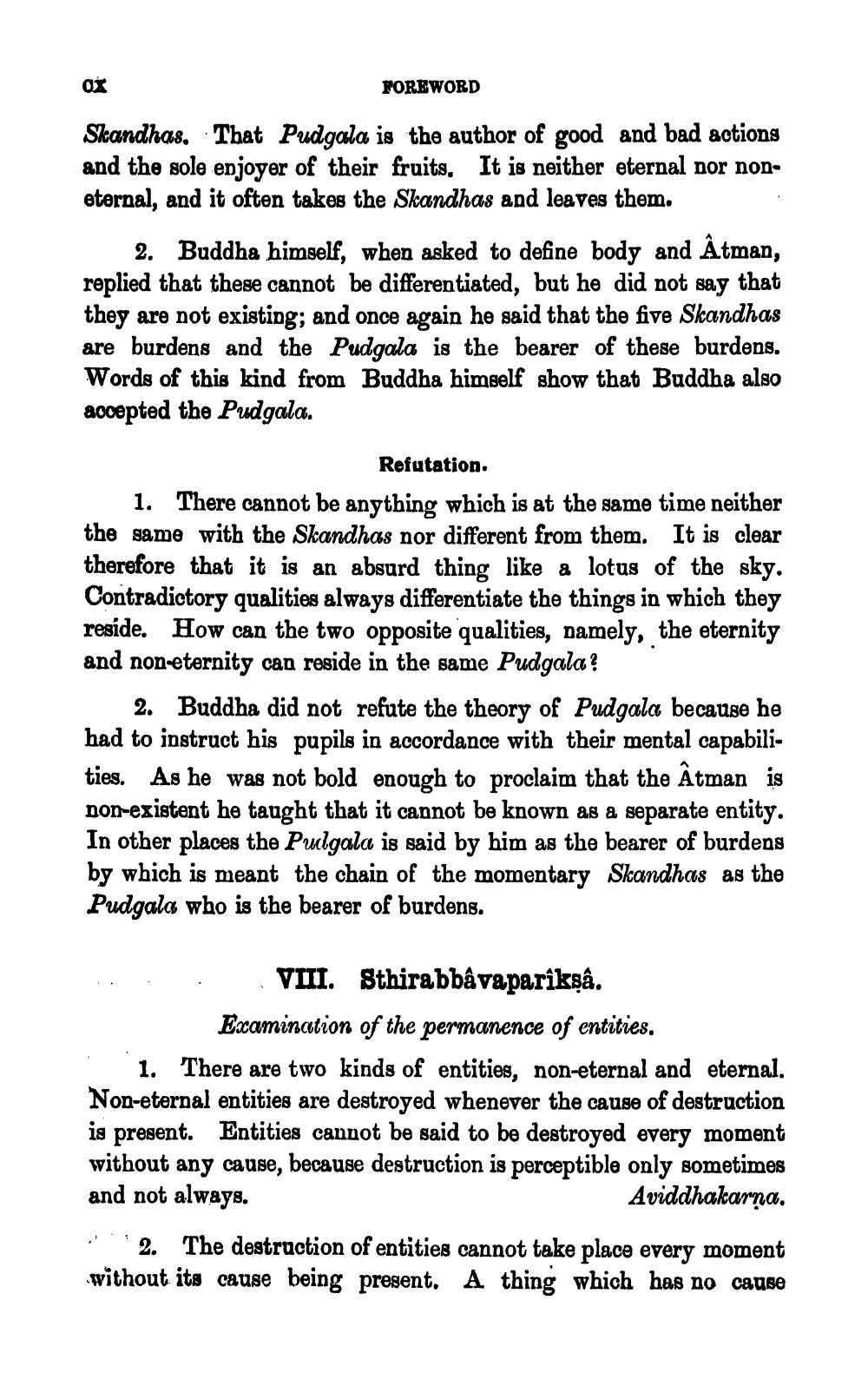________________
FOREWORD
Skandhas. That Pudgala is the author of good and bad actions and the sole enjoyer of their fruits. It is neither eternal nor noneternal, and it often takes the Skandhas and leaves them.
2. Buddha himself, when asked to define body and Atman, replied that these cannot be differentiated, but he did not say that they are not existing; and once again he said that the five Skandhas are burdens and the Pudgala is the bearer of these burdens. Words of this kind from Buddha himself show that Buddha also accepted the Pudgala.
Refutation. 1. There cannot be anything which is at the same time neither the same with the Skandhas nor different from them. It is clear therefore that it is an absurd thing like a lotus of the sky. Contradictory qualities always differentiate the things in which they reside. How can the two opposite qualities, namely, the eternity and non-eternity can reside in the same Pudgala?
2. Buddha did not refute the theory of Pudgala because he had to instruct his pupils in accordance with their mental capabilities. As he was not bold enough to proclaim that the Atman is non-existent he taught that it cannot be known as a separate entity. In other places the Pulgala is said by him as the bearer of burdens by which is meant the chain of the momentary Skandhas as the Pudgala who is the bearer of burdens.
.: : VIII. Sthirabbâ vaparikså.
Examination of the permanence of entities. 1. There are two kinds of entities, non-eternal and eternal. Non-eternal entities are destroyed whenever the cause of destruction is present. Entities cannot be said to be destroyed every moment without any cause, because destruction is perceptible only sometimes and not always.
Aviddhakarna. 2. The destruction of entities cannot take place every moment without its cause being present. A thing which has no cause




